The Role of 1 MWh Battery Storage in Modern Energy Systems
As we look toward a more sustainable future, 1 MWh battery storage systems are emerging as a key player in the energy landscape. These batteries, capable of storing 1,000 kilowatt-hours of energy, are designed to provide quick-response power for various applications. They not only help stabilize power grids but also support the integration of renewable energy sources and serve as backup power during outages. Understanding how these systems work and their potential benefits is crucial for anyone interested in the future of energy storage.
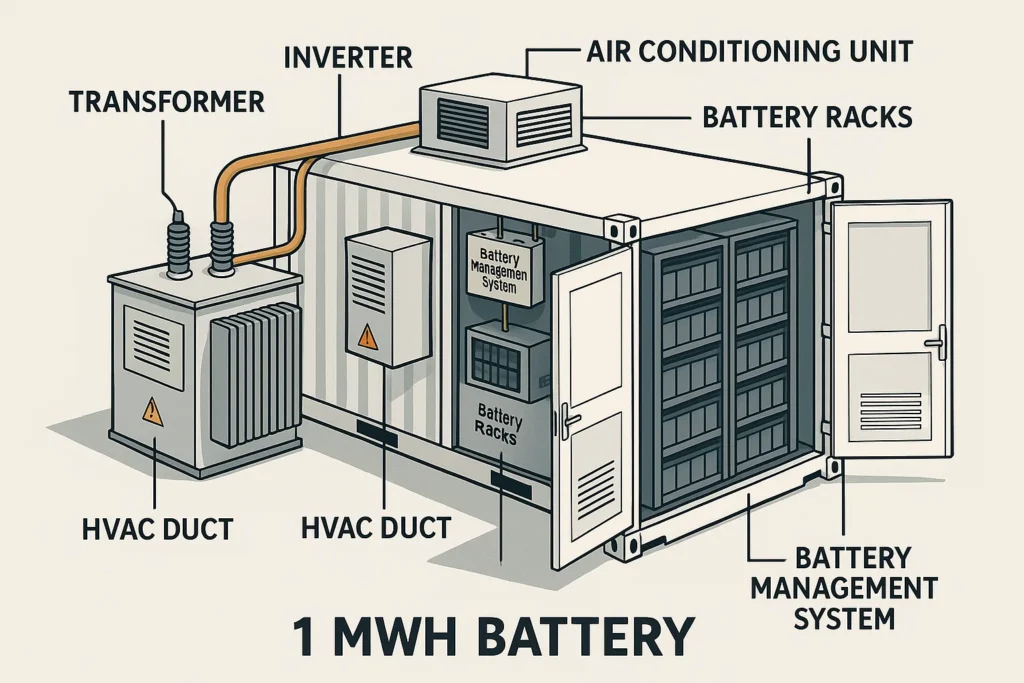
Key Takeaways
- 1 MWh battery systems store significant energy for standby applications, ensuring quick power delivery when needed.
- Different types of batteries, including lithium-ion, lead-acid, and flow batteries, cater to various energy storage needs.
- Standby energy storage enhances grid stability, supports renewable energy, and provides backup power during outages.
- Installation of battery storage requires careful site selection and integration with existing energy infrastructure.
- The economic landscape for battery storage is evolving, with decreasing costs and increasing market growth.
Understanding Storage
Definition and Capacity 1 MWh Battery Storage
So, what exactly is a 1 MWh battery? Well, it’s basically a big energy reservoir. A 1 MWh battery can store one megawatt-hour of electricity. Think of it like this: it’s enough juice to power several hundred homes for an hour, or a smaller number of homes for a longer time. The capacity makes it suitable for various applications, from grid stabilization to providing backup power. It’s a significant amount of energy, making it a player in modern energy solutions.
How It Works
These batteries work through electrochemical reactions. During charging, electrical energy is converted into chemical energy and stored within the battery cells. When discharging, this process reverses, releasing electricity to power whatever it’s connected to. The specific chemistry varies (we’ll get into that later), but the basic principle remains the same. The battery management system (BMS) is important. It monitors and controls the charging and discharging processes to ensure safety and optimal performance. It’s all about managing the flow of electrons!
Applications in Energy Systems
1 MWh batteries are surprisingly versatile. Here’s a few ways they’re used:
- Grid Stabilization: They can quickly inject power into the grid to balance supply and demand, preventing blackouts. This is where 1 MWh battery standby power for grid stability comes in handy.
- Renewable Energy Support: Solar and wind power are intermittent. Batteries store excess energy generated during peak production and release it when needed. This is How 1 MWh energy storage supports renewable energy.
- Emergency Backup Power: Hospitals, data centers, and other critical facilities use them to maintain operations during power outages. This can help reduce How 1 MWh energy storage reduces diesel generator maintenance.
- Peak Shaving: Utilities use them to reduce demand during peak hours, lowering costs and improving grid efficiency.
The rise of battery storage is changing the energy landscape. They offer a flexible and efficient way to manage energy, reduce reliance on fossil fuels, and improve the reliability of the power grid. As technology advances and costs decrease, their role will only become more important.
And, of course, there’s the Cost of 1 MWh lithium-ion battery for emergency backup to consider when choosing the right system.
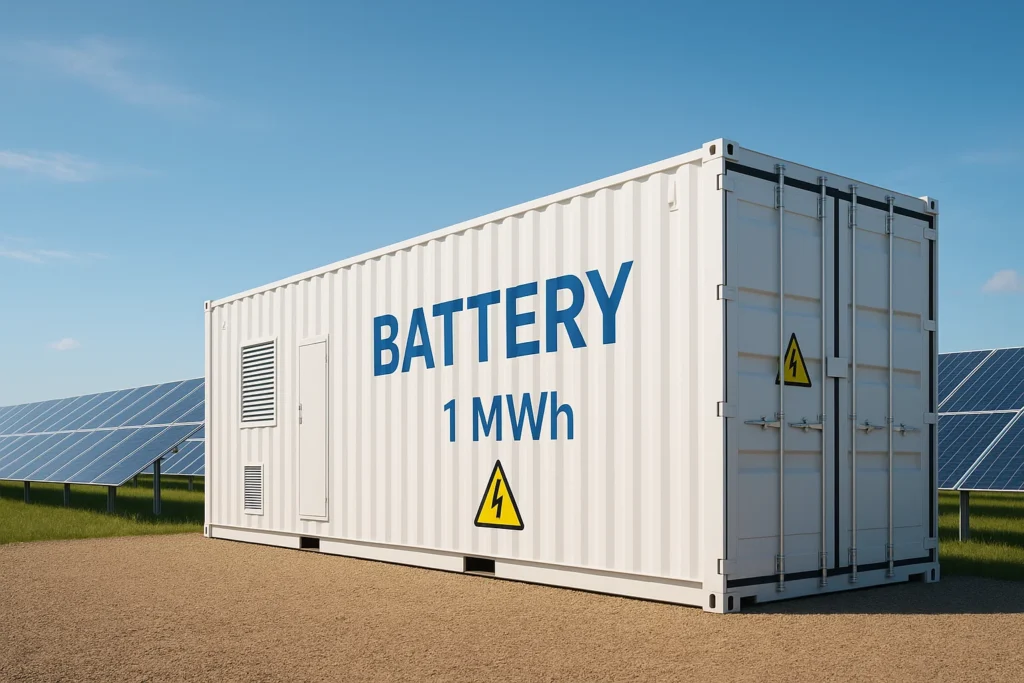
Types of Batteries for Energy Storage
Lithium-Ion Batteries
Lithium-ion batteries have become super popular for energy storage, especially with the rise of electric vehicles. Their high energy density and relatively long lifespan make them a great choice for many applications. They’re not without their drawbacks, though. They can be more expensive than other battery types, and there are some concerns about thermal runaway, which can lead to fires if they aren’t managed properly. Still, the cost of lithium-ion batteries has come down a lot, making them more accessible for utility-scale projects.
Lead-Acid Batteries
Lead-acid batteries are the old reliable of the battery world. They’ve been around forever, and they’re still used in some energy storage applications, especially where budget is a big concern. They’re much cheaper than lithium-ion, but they also have a shorter lifespan and lower energy density. This means you need more of them to store the same amount of energy, which can take up a lot of space. Plus, they contain lead, which is a hazardous material, so disposal can be a pain. Despite these issues, lead-acid batteries can still be a good option for smaller, less demanding applications.
Flow Batteries
Flow batteries are a bit different than the other types. Instead of storing energy in solid electrodes, they use liquid electrolytes that are pumped through a cell. This allows for independent scaling of power and energy capacity, which is a big advantage for large-scale energy storage. They also tend to have very long lifespans, with some lasting for tens of thousands of cycles. However, they’re generally less energy-dense than lithium-ion and can be more complex to operate. A vanadium redox battery is a common type of flow battery.
Flow batteries are interesting because you can increase the amount of energy they store by simply increasing the size of the electrolyte tanks. This makes them well-suited for applications where you need to store energy for long periods of time, like providing backup power during extended outages. They’re also pretty safe, as the electrolytes are generally non-flammable.
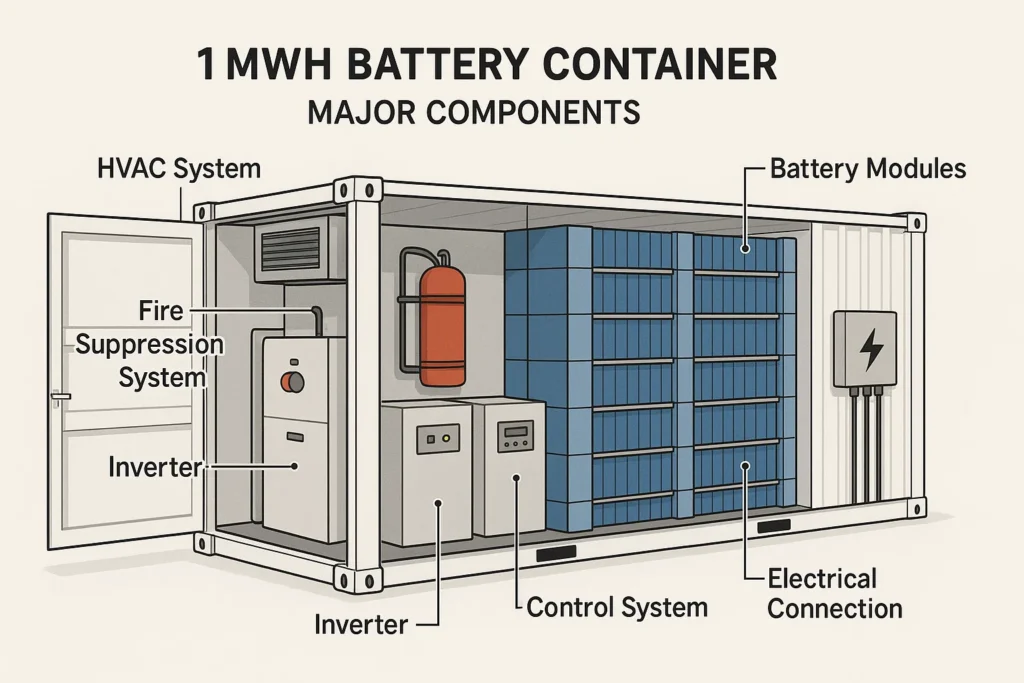
Benefits of Standby Energy Storage
Grid Stabilization
Okay, so picture the power grid like a really sensitive balancing act. Too much power, things get overloaded. Not enough, and you’ve got brownouts. A 1 MWh battery can act like a shock absorber. It quickly injects or absorbs power to keep the grid stable. Think of it as a super-fast responding reserve, smoothing out those little hiccups and preventing them from turning into big problems. These instabilities – fluctuations with periods of as much as 30 seconds – can produce peak swings of such amplitude that they can cause regional blackouts. A properly sized battery storage power plant can efficiently counteract these oscillations.
Renewable Energy Support
Renewable energy is great, right? Solar and wind are clean, but they’re also intermittent. The sun doesn’t always shine, and the wind doesn’t always blow. That’s where battery storage comes in. It stores excess energy generated during peak production times and releases it when demand is high or when renewable sources are down. This makes renewable energy more reliable and helps integrate it more effectively into the grid. It’s like having a backup plan for when Mother Nature takes a break. Utility-scale battery storage plants rely on lithium-ion batteries, as a result of the fast decrease in the cost of this technology.
Emergency Backup Power
Power outages are a pain. They can disrupt businesses, cause inconvenience at home, and even create safety hazards. A 1 MWh battery can provide emergency backup power during outages, keeping critical systems running until the grid is restored. This is especially important for hospitals, data centers, and other facilities where uninterrupted power is essential. Backup generators offer immediate power during outages without the need for fuel handling or equipment movement, ensuring safety and convenience. It’s like having your own personal power plant ready to kick in at a moment’s notice.
Standby energy storage isn’t just about having a backup; it’s about creating a more resilient and reliable energy system. It’s about making sure the lights stay on, even when things get tough.
Installation and Infrastructure Considerations

Site Selection
Picking the right spot for a 1 MWh battery isn’t as simple as finding an empty field. You’ve got to think about a bunch of stuff. First, there’s zoning. Can you even put a big battery there? Then there’s environmental impact. Are you messing with any sensitive habitats? And of course, you need to be close enough to the grid to make connecting easy, but far enough from people that noise and visual impact aren’t a problem. Proximity to existing infrastructure, like substations, can significantly reduce costs.
Here’s a quick rundown of things to consider:
- Zoning regulations and permits
- Environmental impact assessments
- Proximity to grid interconnection points
- Accessibility for maintenance and upgrades
Integration with Existing Grids
Connecting a 1 MWh battery to the grid is like plugging a giant appliance into your house – except way more complicated. You need to make sure the battery can talk to the grid, that it can handle the voltage and frequency, and that it won’t cause any problems for other users. This usually involves installing some pretty sophisticated equipment, like inverters and transformers, and working closely with the utility company to make sure everything plays nice. Think of it as teaching the battery to speak the grid’s language. Proper grid integration is key.
Safety and Security Measures
Let’s be real, a 1 MWh battery is basically a giant box of energy, and you need to treat it with respect. That means having safety systems in place to prevent fires, explosions, and other bad stuff. It also means keeping the battery secure from vandals and thieves. This can involve things like fire suppression systems, ventilation, and security cameras. It’s all about making sure the battery is safe for the people who work around it and the community it serves. Here are some important safety measures:
- Fire detection and suppression systems
- Ventilation and temperature control
- Restricted access and security monitoring
- Emergency shutdown procedures
It’s important to remember that safety isn’t just about the equipment. It’s also about the people who install and maintain the battery. They need to be properly trained and equipped to handle any situation that might arise. Regular inspections and maintenance are also a must. This ensures the solar battery storage system operates safely and efficiently over its lifespan.
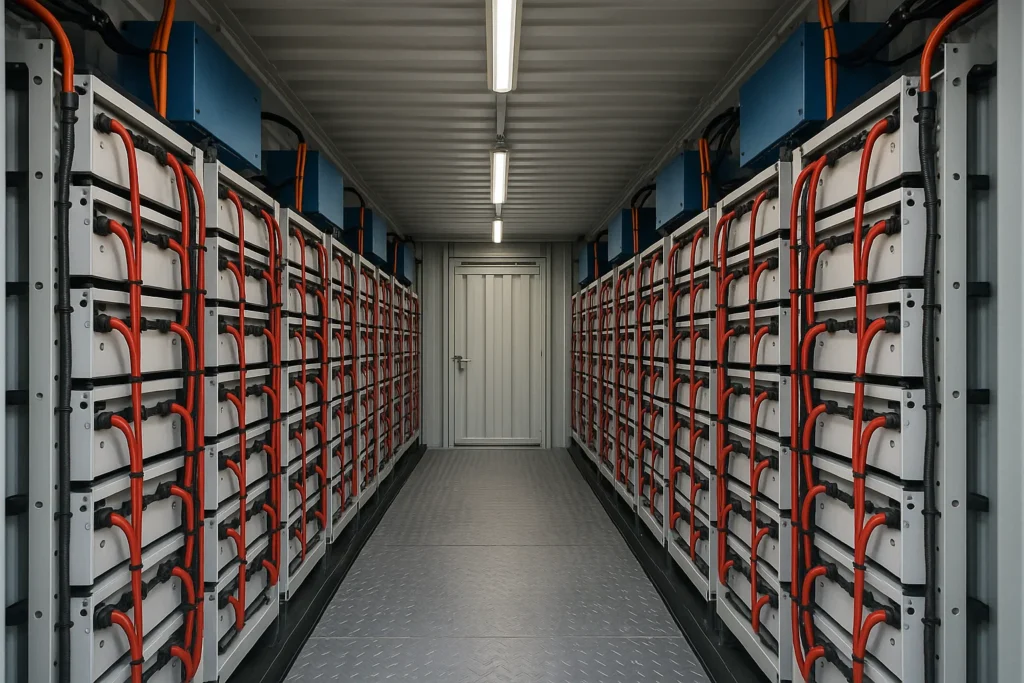
Economic Impact of Battery Storage
Cost Trends and Affordability
Okay, so let’s talk money. The cost of battery storage has been on a wild ride, mostly downwards, which is great news. What used to be a super expensive option is now becoming way more accessible. This drop in price is making battery storage a viable option for more people and businesses.
Here’s a quick look at how costs have changed (these are just examples, real numbers change fast):
| Year | Cost per MWh (Example) |
|---|---|
| 2020 | $150 |
| 2023 | $117 |
| 2025 (Projected) | Even Lower! |
Market Growth and Investment
The market for battery storage is booming. Seriously, it’s like everyone suddenly realized how useful these things are. Investment is pouring in, and you’re seeing new companies and projects popping up all over the place. China and the USA are leading the charge, but other countries are catching on quick. In 2024, the USA installed a massive amount of batteries, showing just how fast this market is growing.
- Greater investment means more innovation.
- Additional projects mean more jobs.
- Increased competition means better prices.
Comparative Analysis with Other Energy Sources
So, how does battery storage stack up against other ways of getting energy? Well, for short bursts of power, batteries are often cheaper than things like gas turbines. Plus, they’re way better for the environment, especially when paired with renewable energy sources like solar. It’s not always a clear win, though. Things like pumped hydro storage can still be more cost-effective for really long-term storage. But the gap is closing, and as battery tech gets better, it’s becoming a more attractive option all around.
Battery storage is changing the game. It’s not just about having backup power anymore; it’s about making the whole energy system more efficient, reliable, and sustainable. And as the costs keep coming down, it’s only going to become a bigger part of the picture.
Future Trends in Battery Technology
Advancements in Battery Chemistry
Battery chemistry is a hotbed of innovation right now. Everyone’s looking for the next big thing that will make batteries cheaper, safer, and more powerful. Solid-state batteries solid-state batteries are getting a lot of buzz because they could pack way more energy into a smaller space and reduce the risk of fires.
Other promising areas include:
- Lithium-sulfur batteries, which could offer higher energy density.
- Sodium-ion batteries, using more abundant materials than lithium.
- Redox flow batteries, improving scalability and lifespan.
Scalability and Modular Systems
Think of batteries like LEGOs – the idea is to make them super easy to scale up or down depending on what you need. Modular systems are becoming more popular because they let you add or remove battery units as your energy needs change. This is great for businesses or communities that want to start small and grow their storage capacity over time. Standardized components and simplified installation are key goals.
Environmental Considerations
What happens to all these batteries when they’re done? That’s a big question. Recycling is becoming a major focus, with companies working on ways to recover valuable materials like lithium, cobalt, and nickel from old batteries. There’s also a push to design batteries that use more sustainable and less toxic materials in the first place. It’s all about reducing the environmental footprint of energy storage.
We need to think about the full life cycle of batteries, from mining the raw materials to disposing of them responsibly. It’s not enough to just focus on making them more efficient; we also need to make them greener.
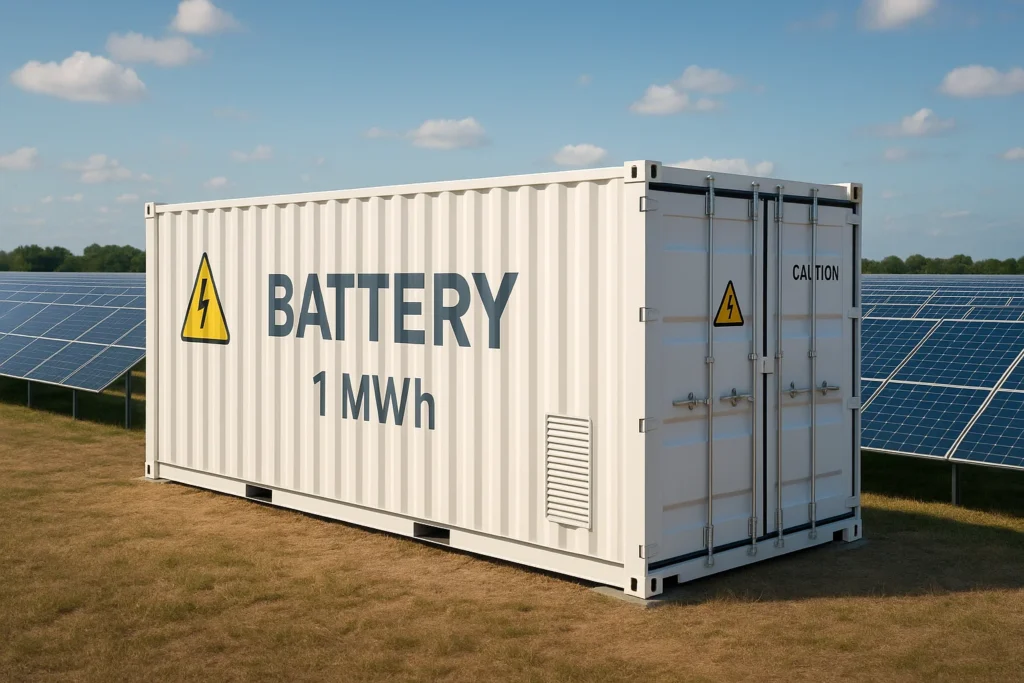
Real-World Applications of 1 MWh Battery Systems
Case Studies
Okay, so you’re probably wondering where these 1 MWh batteries are actually being used, right? It’s not just theory! They’re popping up all over the place, doing some pretty cool stuff. For example, there’s a microgrid project in California where a 1 MWh battery helps power a small town using solar energy.
This ensures they have power even when the sun isn’t shining. Then, there’s a factory in Germany that uses one to reduce its peak demand charges – basically, they store energy when it’s cheap and use it when it’s expensive, saving them a ton of money. And don’t forget about the data center in Ireland that uses a battery for backup power, ensuring their servers stay online even during outages. These are just a few examples, but they show how versatile these systems can be.
Impact on Local Communities
These battery systems aren’t just about big corporations saving money; they can have a real impact on local communities. Think about it: a town with a 1 MWh battery paired with a solar farm can become more energy independent, reducing its reliance on fossil fuels and creating local jobs. Plus, these systems can provide backup power during emergencies, keeping the lights on and critical services running when the grid goes down. It’s not all sunshine and roses, of course. There can be concerns about the environmental impact of battery production and disposal, but overall, the benefits for communities are pretty significant. For example, LifePO4 batteries are emerging as a leading choice for sustainable energy solutions.
Role in Smart Grids
Smart grids are the future, and 1 MWh batteries are playing a key role in making them a reality. These batteries can help stabilize the grid by quickly responding to changes in demand and supply. They can also store excess energy from renewable sources, like solar and wind, and release it when it’s needed most. This helps to integrate more renewable energy into the grid, reducing our reliance on fossil fuels. Plus, batteries can provide ancillary services, like frequency regulation, which helps to keep the grid running smoothly. It’s all about creating a more resilient, efficient, and sustainable energy system. Battery storage can be used for peak power and ancillary services.
One thing to keep in mind is that the technology is still evolving. We’re seeing advancements in battery chemistry, like solid-state batteries, that could make these systems even more efficient and cost-effective in the future. So, while 1 MWh batteries are already making a difference, their role in smart grids is only going to grow in the years to come.
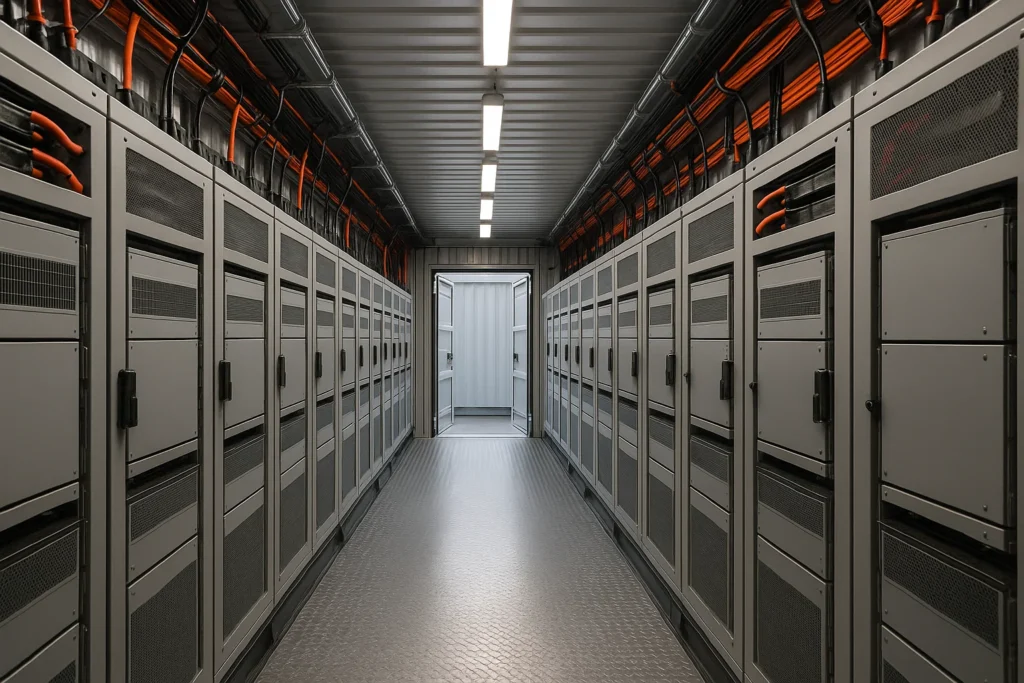
Looking Ahead: The Role of Battery Storage in Our Energy Future
In the end, a 1 MWh battery is more than just a chunk of tech; it’s a game changer for how we think about energy. These batteries can step in when the grid needs a boost, making them key players in keeping everything running smoothly. They help us use more renewable energy, which is a big deal as we try to cut down on fossil fuels. Plus, they’re quick to set up and can fit right into cities or even homes. As we push for cleaner energy, these batteries will be at the forefront, helping us tackle challenges like outages and peak demand. So, while they might seem small, their impact on our energy future is huge.
Frequently Asked Questions
What is a 1 MWh battery?
A 1 MWh battery can store 1,000 kilowatt-hours of energy. It’s used to provide backup power, stabilize the electric grid, and support renewable energy.
How does a 1 MWh battery work?
This battery system can deliver power quickly to help balance the electricity supply and demand. It can provide full power for one hour or less power for a longer time.
What types of batteries are used for energy storage?
Common types include lithium-ion batteries, lead-acid batteries, and flow batteries. Each type has its own advantages depending on the situation.
What are the benefits of standby energy storage?
Standby energy storage helps stabilize the grid, supports renewable energy sources like solar and wind, and provides backup power during outages.
What should be considered when installing a battery storage system?
Important factors include choosing the right location, making sure it works well with the existing power grid, and ensuring safety measures are in place.
How does battery storage impact the economy?
Battery storage can lower electricity costs, create jobs, and attract investments in clean energy technologies, making it an important part of the energy market.

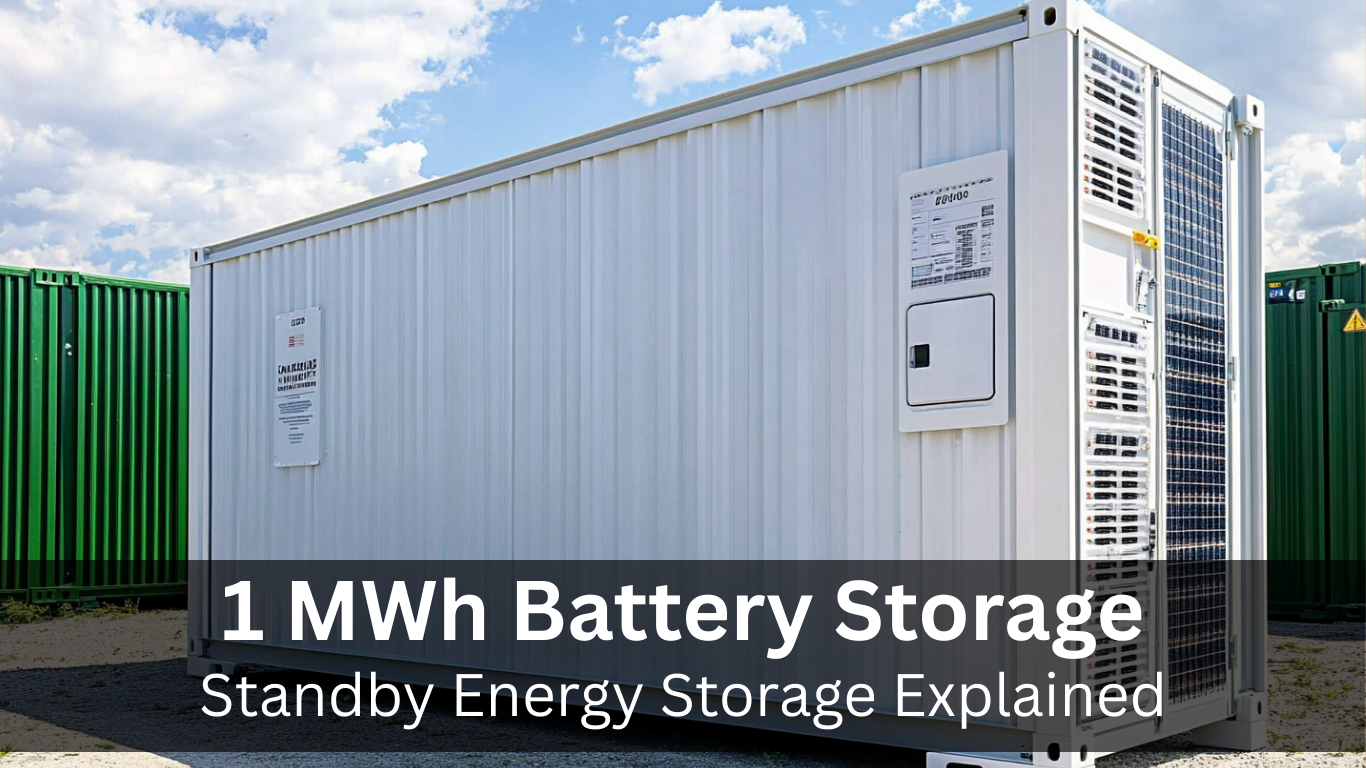


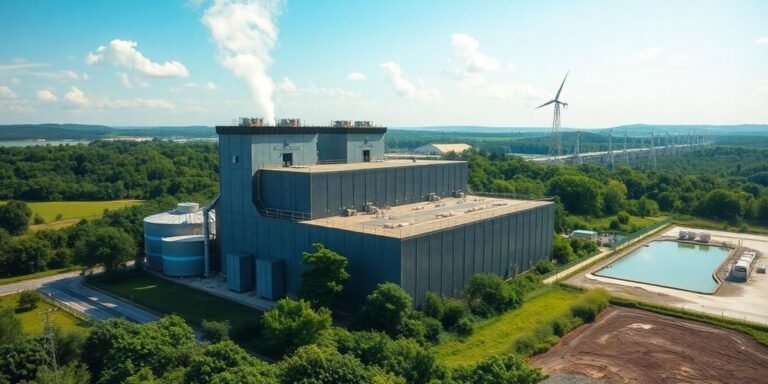
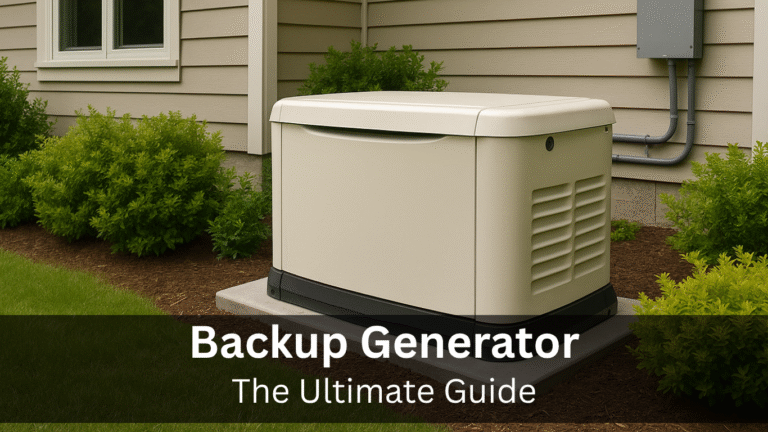

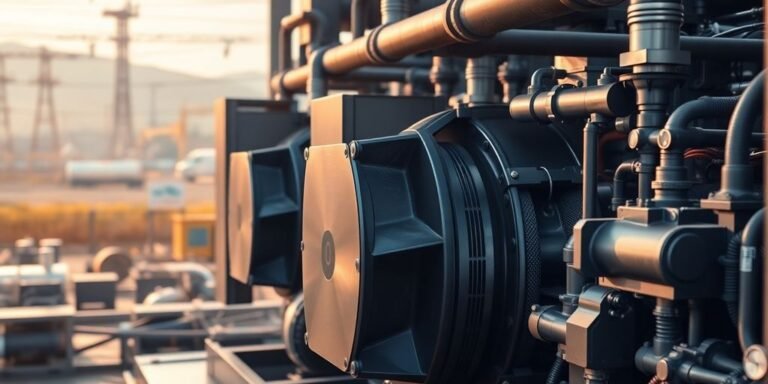

6 Comments